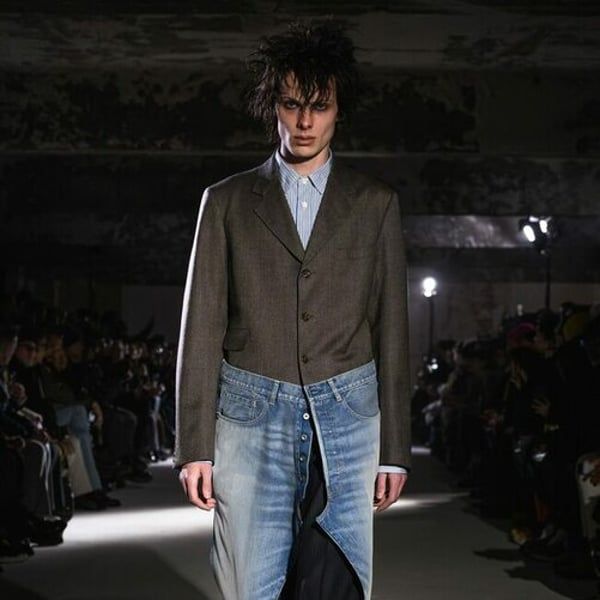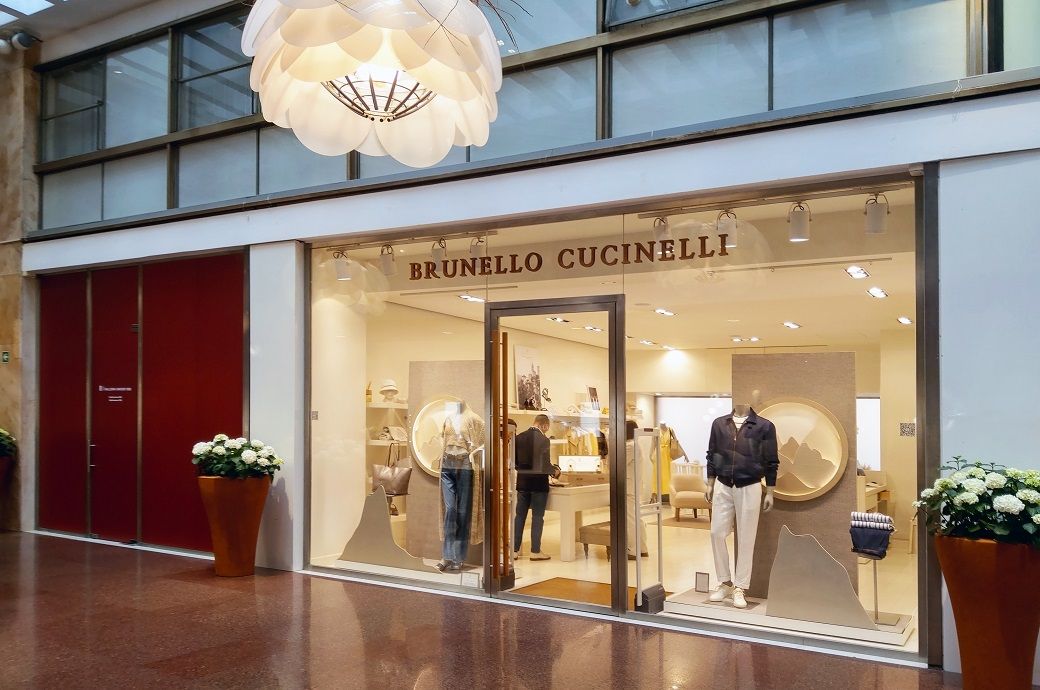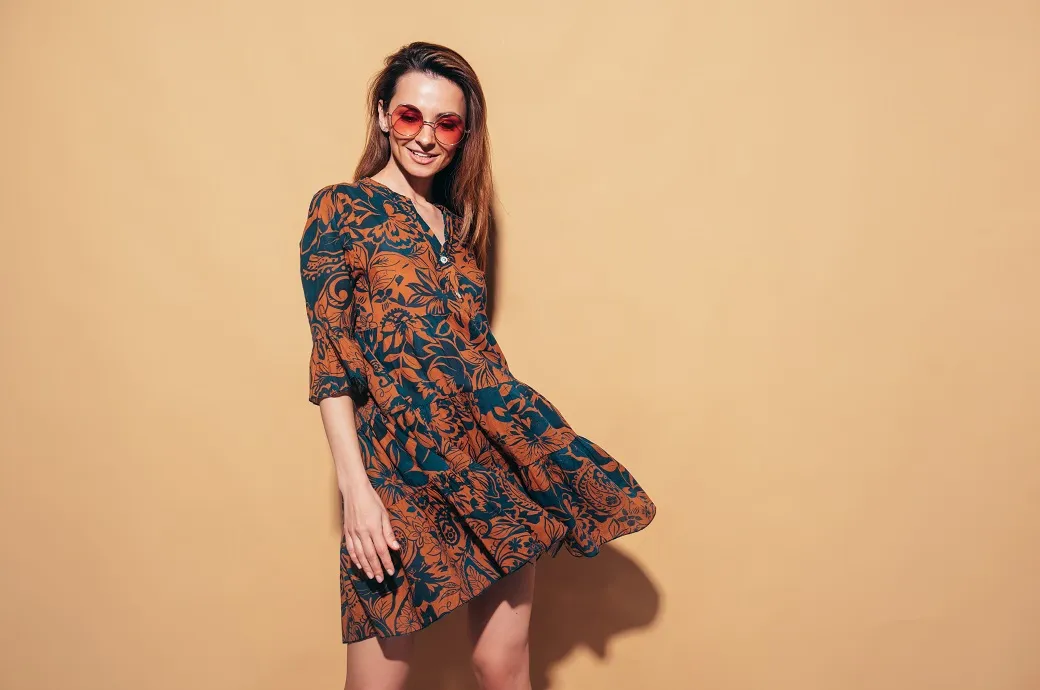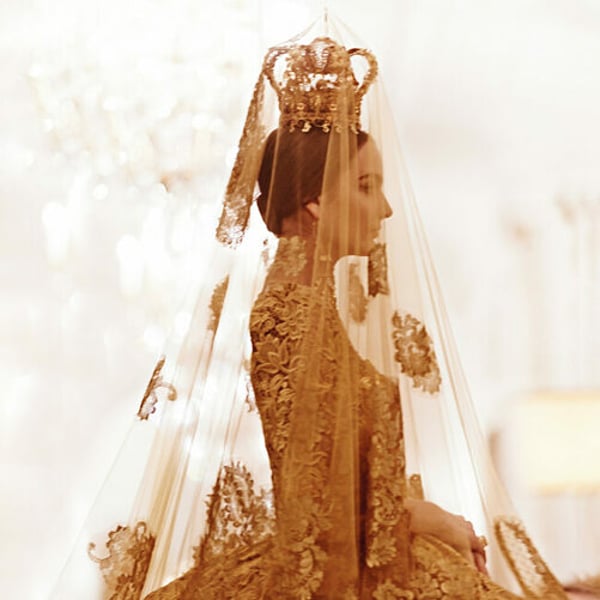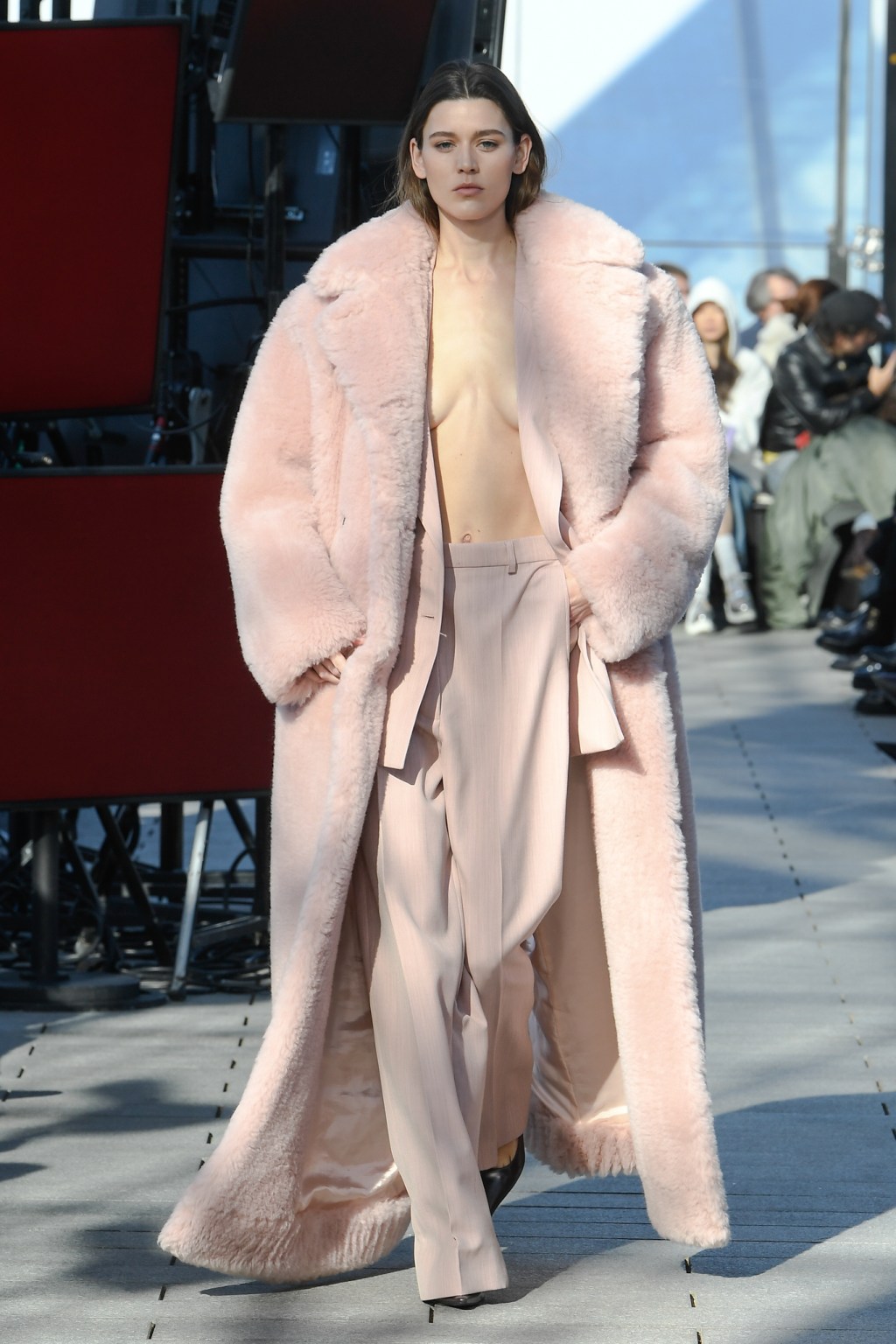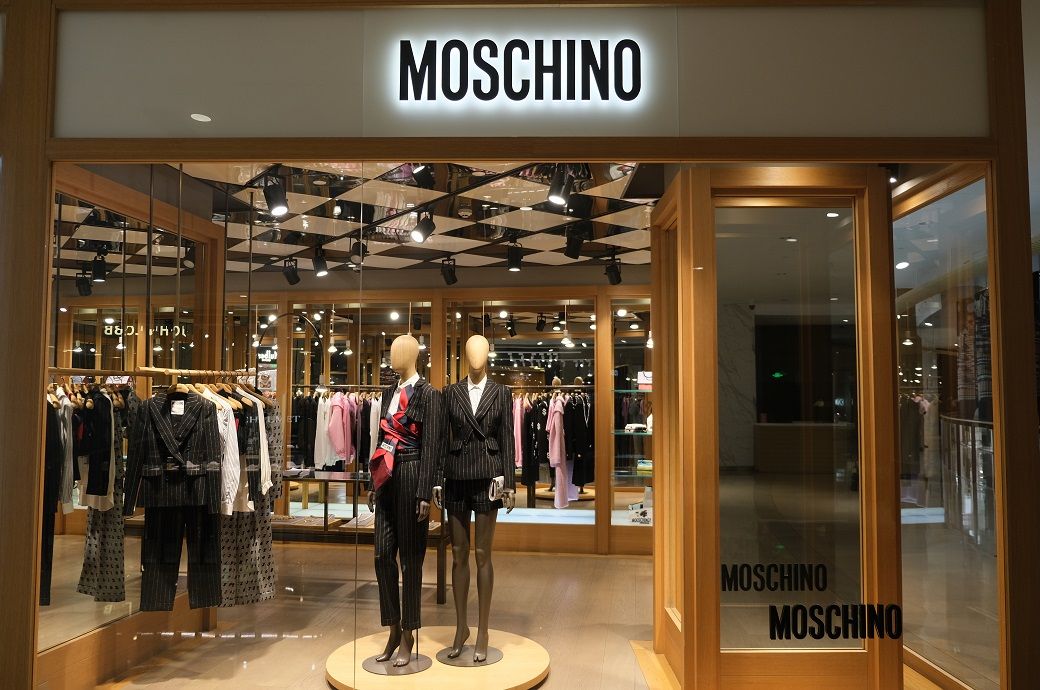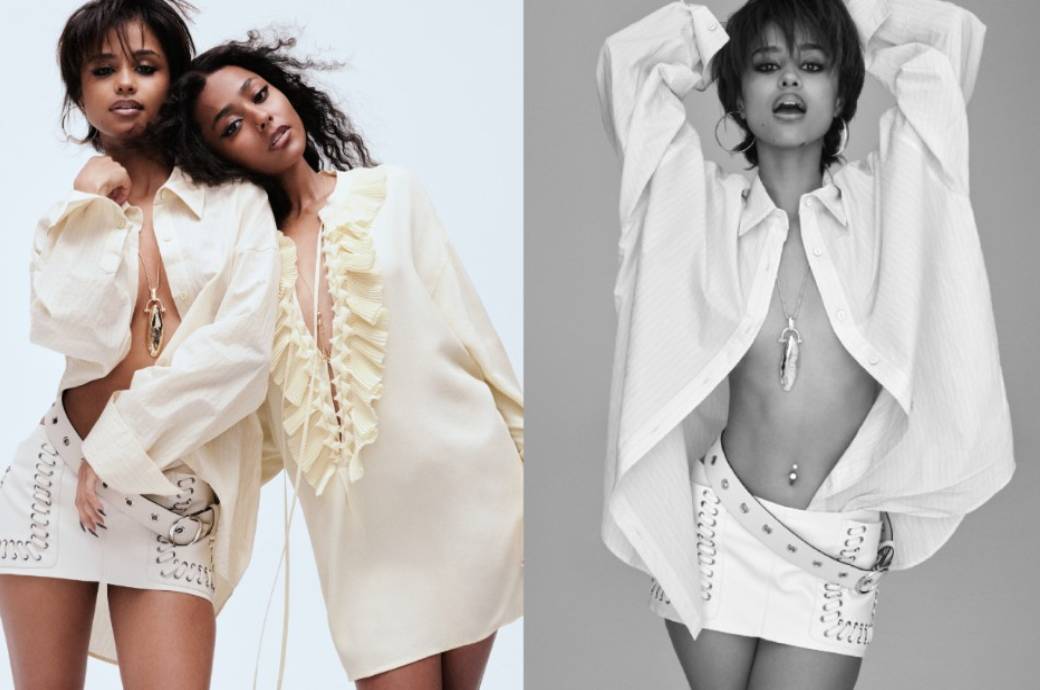Translated by
Cassidy Stephens
Published
January 19, 2024
Suits are constantly reinvented in this Men's Fashion Week, dedicated to the autumn-winter 2024/25 collections. On Friday, the Paris catwalks offered another explosive cocktail of what can be done around the codes of men's fashion, with, among others, the Japanese creativity of Junya Watanabe, the relaxed tailoring of the British Paul Smith and the Korean eccentricity by Juun.J.
Junya Watanabe Man excelled in the art of trompe-l'œil this season. Fashion is the Japanese designer's favorite playground, and he has no equal when it comes to hijacking, deconstructing and remixing the basic elements of menswear, constantly creating new, inventive and often highly desirable garments.
For next winter it focuses on the coat, with two new and original concepts. First, he explored the piece with two-in-one sleeves, where the top extended into a pant shape, with the two legs metamorphosed into basques. Using this process, he revised both the typical suit, the denim ensemble with jacket and pants sewn tone-on-tone in one piece, and the mismatched model.
The navy blue jacket was paired with camel canvas pants and the tweed jacket with faded jeans. A Levi's, of course, with which the designer collaborates. Other collaborations in this collection include Palace, New Balance, Carhartt and Brooks Brothers.
With his new two-in-one coats, Junya Watanabe Man offered another fun optical effect, with baggy pants superimposed on the actual pants, revealing them with every step. These models were worn with sailors and metallic necklaces to give it a rocker touch.
The other trick was to transform a classic coat into a cape without it being noticeable. The proportions were slightly rounded at the shoulders, the volume swelled downwards, the sleeves were sewn to the sides and there you have it.

Paul Smith also revised the men's wardrobe, but in a softer way. As he himself summarized in his statement of intent, “it is a classic with a twist.” The wardrobe is a fusion of casual tailoring and utilitarian outerwear with sporty or country influences.
Quilted jackets and vests were tucked under coats and worn over suits, shirts, and ties. The suits were cut a little wider with double-pleated pants. The pinstriped knitwear and vest, typical of the English brand, stood out under a beige gabardine coat. The jacket with tuxedo lapels was worn over a turtleneck in the same spruce green color. A removable maxi pocket attached to the belt completed the look, with a scarf tied around the neck and pulled back.
The designer brilliantly combined different autumnal hues: violet and eggplant, bottle green, navy blue and chocolate brown, with incursions of ocher and lime. Foliage motifs, inspired by the house wallpapers of Yves Saint Laurent and Pierre Bergé, took over jackets and shirts like camouflage, while abstract graphics were used on mohair sweaters.

For its mixed men's and women's fashion show, Juun.J produced an unexpected collection, much less streetwear-futuristic than usual, following a more formal line. Her favorite baggy sweatshirts and Bermuda shorts were paired with impeccably tailored suits, often with little rocker jackets for good measure.
The South Korean designer Jung Wook Jun focused on textures and materials (wool, leather, denim, fur, velvet) which he subjected to all kinds of treatments. Long dark denim coats with rust highlights had a velvety feel, finely striped turtlenecks were made of latex, sometimes extending to a maxi dress with long fur, while an XXL hoodie was made to make chose neoprene.
Plaid was mixed with denim in a loose-fitting hybrid pant, or used to create a tutu-sized strapless minidress, also in faded denim. A short coat was completely disheveled with silver fringes. There was an emphasis on smooth velvet, with gorgeous flowing coats and silky trousers dressing all the models for an unexpectedly elegant finale.
Copyright © 2024 FashionNetwork.com All rights reserved.

